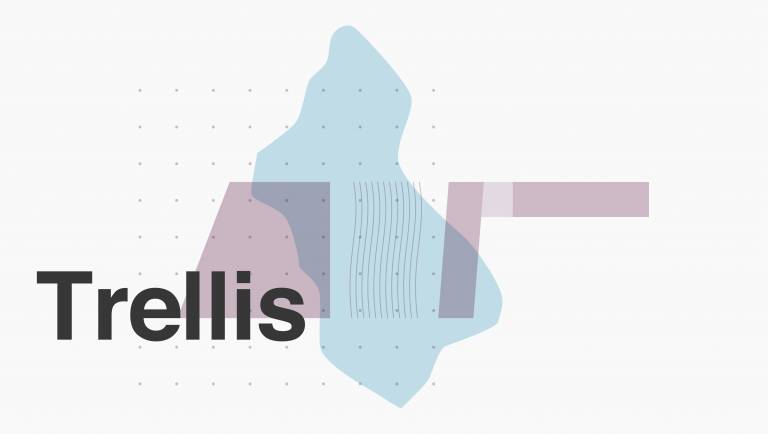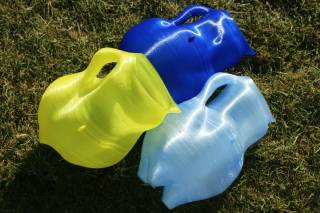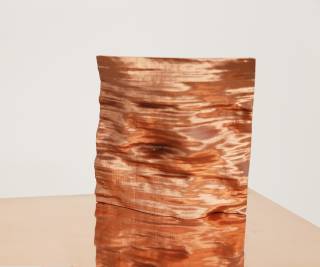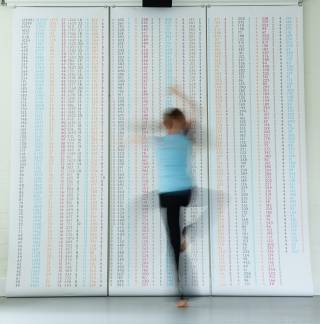UCL scientists collaborate with artists on installations for Queen Elizabeth Olympic Park
16 October 2019
Four public art works, created by east London artists in partnership with UCL scientists and engineers, will be exhibited this month (October) at Queen Elizabeth Olympic Park, the future home of UCL’s new campus, UCL East.

The installations include film, drawings, oral history interviews and sculpture, and each gives a different take on the history of the site, which was developed for the London 2012 Olympic and Paralympic Games, and is now home to waterways, parklands, creative industries and residential developments, along with sporting activities.
The artworks were developed as part of Trellis, a UCL Public Art programme launched in 2018, which brings together contemporary artists, scientists and engineers to develop installations inspired by the history of the Lea Valley, its paths and waterways.
The four installations will be on display from 19 – 27 October, and are located around the future site of UCL East, the new UCL campus that will be a hub of education, discovery and co-creation. UCL East will be part of East Bank, a new education and cultural quarter in Stratford, with partners including the BBC, Sadler’s Wells, UAL’s London College of Fashion and the V&A in partnership with the Smithsonian Institution.
Sam Wilkinson, Head of Public Art, UCL Culture, said: “After ten months of careful collaboration between contemporary artists and ground-breaking scientists and engineers from UCL, I’m delighted that the public can finally see these four unique installations. Inspired by the history and the future of Queen Elizabeth Olympic Park, the four artworks are free for everyone to enjoy.”
Artemis of the Lea

East London-based artist Amanda Lwin, Dr Tse-Hui Teh (UCL Bartlett School of Planning) and Dr Lena Ciric (UCL Civil Environment and Geomatic Engineering) collaborated on a sculptural installation of brightly coloured vessels designed to function as both watering cans and portable urinals.
Throughout summer 2019, allotmenteers in east London experimented with urine to boost their vegetables. When topped up with water, urine is an excellent nitrogen-rich fertiliser – seven times more potent than manure.
Beyond Sight Within Grasp (Red, Yellow and Blue)

With the help of visually impaired collaborators, artist David Rickard and Professor of Nanotechnology Tony Kenyon (UCL Electronic & Electrical Engineering) have produced a new public sculpture which inverts the visual dominance typically associated with public art, by making touch the primary mode of sensory appreciation.
The mirror polished sculpture reflects the wavelengths of red, yellow and blue light.
Point Patterns

Developed by visual artist Alison Turnbull, theoretical physicist Dr Elsa Arcuate (UCL Centre for Advanced Spatial Analysis) and photographer and film maker Hugo Glendinning, the installation centres on a multi-layered film exploring physical movement, generated by research data and maps of east London.
It is accompanied by drawings, patterns, maps and colour coding reflecting urban systems.
No Smell, No Dirt, No Trouble
Artist Lucy Harrison and researcher Efstathia Kostopoulou (UCL Bartlett School of Architecture) investigated archive records to map the industrial history of Queen Elizabeth Olympic Park.
Using promotional material, images and oral history interviews, they have produced a sound piece, booklet and vinyl window installation. During the exhibition there will be an opportunity to explore foraged jams and the uses of plants and flowers on the site today.
The artworks can be found in and around the Last Drop Café, which is situated next to the ArcelorMittal Orbit in the Queen Elizabeth Park. Find out more about Trellis and how to plan your visit: https://www.ucl.ac.uk/culture/whats-on/trellis
Trellis is produced by UCL Culture and UCL East with support from the Engineering and Physical Sciences Research Council
 Close
Close

